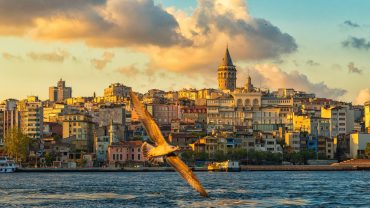Bilecik Province (Turkish: Bilecik ili) is a province in midwest Turkey, neighboring Bursa to the west, Kocaeli and Sakarya to the north, Bolu to the east, Eskişehir to the southeast and Kütahya to the south, spanning an area of 4,307 km2. The population is 225,381. Most of the province laid down in Marmara Region but eastern parts of Gölpazarı and Söğüt district and districts of İnhisar and Yenipazar remained in Black Sea Region, smaller southeastern parts of Bozüyük and Söğüt remained in Central Anatolia Region and smaller southwestern part of Bozüyük remained in Aegean Region.
History
The region was inhabited as early as 3000 BC, and was part of the territory controlled by such notable civilizations as the Hittites (1400–1200 BC), the Phrygians (1200–676 BC), Lydians (595–546 BC), Persians (546–334 BC), Romans (74–395 AD) and Byzantians (395 AD to late 13th century, with two brief occupations by Ummayads in between).
The region also contains Söğüt, the small town where the Ottoman Empire was founded in 1299, and is the source of important archeological as well as cultural artifacts.
Sites of interest
In Söğüt a site of interest is the Ethnographical Museum. The town Bilecik is famous for its numerous restored Turkish houses. Some other sites of interest in the province are: Osman Gazi and Orhan Gazi mosques, Seyh Edebali and Mal Hatun mausoleums, Köprülü Mehmet Pasha mosque, Köprülü Caravanserai, Kaplikaya tombs, Rüstem Pasha mosque, and Gülalan Pavilion.
Province of Bilecik is located at the southeast of Marmara Region at the intersection locality of Marmara Region, Black Sea Region, Central Anatolia Region and Aegean Region. The oldest known names of the province are Agrilion and Belekoma. Province of Bilecik is the land where the Ottoman Empire is founded. The province is founded around the Sakarya river and is known with the riches of small ponds and creeks and carries the traces of ancient ages. The town is famous for its numerous restored Turkish houses. It is increasingly becoming more attractive to tourists. With its rich architectural heritage, Bilecik is a member of the European Association of Historic Towns and Regions. 30 kilometers southeast from Bilecik is Söğüt, a small town, where the Ottoman Empire was founded in 1299.
The history of Bilecik dates back to the early 2nd millenium B.C. The oldest known names of the region were “Agrilion” and “Belekoma”. The region was ruled by the nations of Thyns, Egypt, Hittite, Frig, Kimmer, Lydia, Persian, Macedonian civilizations and Bitinya Kingdom, Roman Empire, Byzantine Empire and Ottoman Empire. In 1298, the Ottomans conquered the region. During the Turkish War of Independence, between 1919 and 1922 most parts of the city were destroyed and rebuilt again by the first years of Turkish Republic. Places To Visit ; The Clock Tower is located at the center of Bilecik province over a hill dominant to the city. The Watch Tower is four – sided, with one clock in each side and was constructed by Sultan II. Abdülhamit. Belekoma Castle: The castle is located at the banks of the Hamsıs Creek on a steep hill. It was constructed by the Byzantine in Medieval Ages. Köprülü Mehmet Paşa Caravansary is located on the Bilecik – Adapazarı highway in Vezirhan Village. It was constructed by Sadrazam Köprülü Mehmet Paşa at the beginning of the 17th century. The roof of the building had collapsed in 1915. Only four walls are standing in the present day. Most important mausoleums of Bilecik Province are Şeyh Edebalı Mausoleum, Malhatun Mausoleum, Dursun Fakıh Mausoleum and Ertuğrul Gazi Mausoleum. Thermal Resorts Osmaneli – Selçik Mineral Waters resort is located at a locality 9 kilometers distant to Osmaneli District.
The transportation is possible via highway and railway. The mineral water comes out from four separate fountains. This mineral water is known to cure the diseases of stomach, liver, ballast, intestines and urethra. This water also assists to dissolve and drop the rocks formed in kidneys. Söğüt Çaltı Thermal Spring is located at the Çaltı locality of Söğüt district. The water of this thermal spring comes from a spring, which is 30 km. away from the resort. The water of this thermal spring is used as bath and drinking. The water is known to cure the skin diseases, stomach sicknesses, rheumatic diseases, neuritis, poli neuritis and gynecological diseases.
Highlands Kömürsu Plateau is at 28 km distance to the center of Bozüyük district and is covered with fir trees, black pines, beech trees, juniper trees and poplar trees. In the summer season, the plateau is covered with green meadows and various flowers. The plateau is also an important location for winter tourism. Sofular Plateau is at 25 km distance to the center of Bozüyük district and is covered with pine and fir trees. The height of the plateau is approximately 1600 meters. The plateau is important for Plateau tourism. Kamçı Plateau is located at the region of Bozcaarmut village of Pazaryeri district and is important with its pine tree forests.
This plateau is used as camping and resting place. Ancient Cities Küçükelmalı Small Lake Environ is a promenade area is located in the borders of Küçükelmalı village, which is 10 kilometers away from Pazaryeri district. The area is covered with pine forests and is a resting place. Bozcaarmut Small Lake Environ is a promenade area is at the vicinity of Bozcaarmut Village, which is 15 km away from the district. The area is covered with fir tree and pine forests. Kınık Waterfall comes out from Kınık village Alamandere locality and displays an interesting appearance. It is approximately 25 km. away from the city center.





Comment (0)